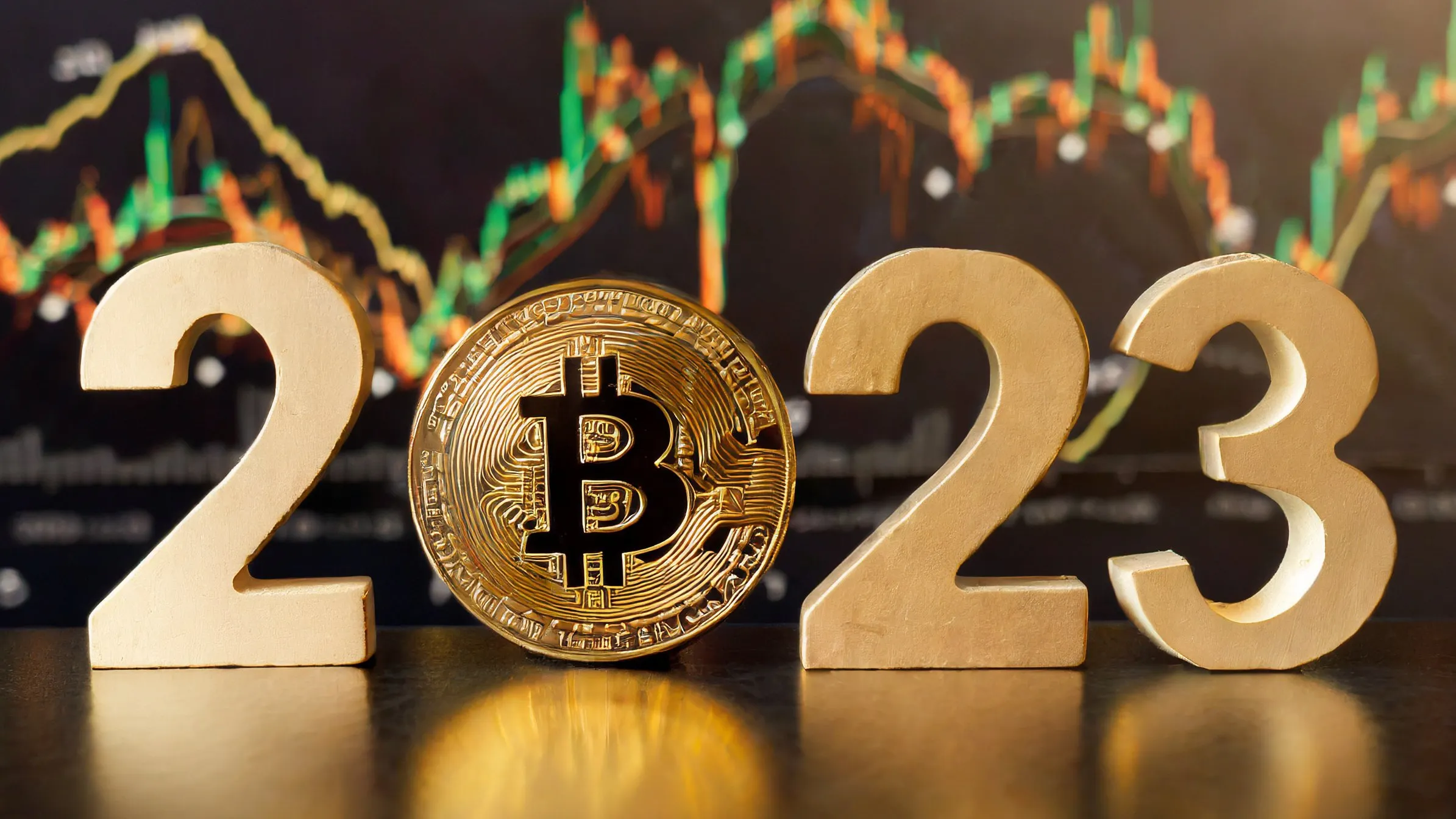Bitcoin couldn’t be stopped this year.
Countless bearish scenarios played out that might have left a significant dent in the asset class. After the FTX scandal exploded last year, sending the crypto market into a death spiral, some asked whether Bitcoin could recover.
Later on, a banking crisis ensued, with tech- and crypto-friendly banks like Silicon Valley Bank, Silvergate, Signature, and Prime Trust shutting up shop. Up until they were shut down, Silvergate and Signature had provided integral payment rails for institutions to settle crypto transactions with one another.
Then the U.S. Securities and Exchange Commission and Department of Justice hit Binance, the world’s biggest crypto exchange, with lawsuits and criminal charges. It wasn’t a direct hit to Bitcoin, but questions swirled about whether the crypto industry was about to lose an institution that handles a huge swath of its trades—including 8% of all Bitcoin volume.
No other exchange comes close to accounting for that much of Bitcoin’s trading volume. That’s double the amount of BTC trading on the next largest exchange and four times the Bitcoin volume that Coinbase has seen in the past 24 hours.
But, Bitcoin prevailed.
With the asset now trading at $41,850, according to CoinGecko, it’s up 148% from the price tag of $16,824 it had this time last year.
All the negativity surrounding the industry, regulatory enforcement, banks crashing, exchanges imploding, seems to have investors unfazed.
What is it that’s keeping investors interested in Bitcoin, then?
Spot Bitcoin ETF buzz
Perhaps one of the biggest stories of the year was the hype surrounding a spot Bitcoin exchange-traded fund (ETF). 2023 was the year it seemed increasingly likely the long-awaited investment vehicle would get approved.
After a decade of denials from the U.S. Securities and Exchange Commission, BlackRock—the world’s biggest asset manager—filed an application with the regulator in June for its iShares Bitcoin Trust. This led analysts to become even more optimistic about the approval of such a product. That, in turn, caused the price of Bitcoin to rocket.
Despite the scams and hacks of this year and last, there was still interest in the biggest cryptocurrency by market cap—especially from institutions—because BlackRock CEO Larry Fink has very publicly given it his blessing. He’s called it an “international asset” and predicted that it will “transcend any one currency.”
Bitcoin as “digital gold”
Investors flocked back to Bitcoin as a “digital gold” this year—something Bitcoiners have long described the asset as.
In fact, the cryptocurrency even experienced a decoupling from tech stocks and strong correlation to the precious metal as the banking industry took a hit.
As a volatile “risk-on” asset, Bitcoin behaved largely like equities last year as investors shied away from such assets and instead focused on greenbacks and gold due to the Federal Reserve’s aggressive interest rate hikes.
But despite rates still rising this year, the collapse of tech-friendly banks and wider macroeconomic uncertainty led investors to see the asset as a safe-haven, experts told Decrypt. Top tech investor Cathie Wood said this month that Bitcoin was both a “risk-on and risk-off asset” due to its transparency and decentralized nature.
The question is: Will it last?
Ordinals blow up
The most important—and perhaps, most divisive—innovation to take place on the top cryptocurrency happened this year: Ordinals.
Ordinals are NFT-style inscriptions that are made onto individual satoshis (the lowest denomination of a bitcoin). They allow for arbitrary, non-financial data to be included into the Bitcoin blockchain and have led to all sorts of protocols and projects mushrooming.
From Bitmaps, which allows users to own select Bitcoin blocks, to the Fren protocol, a friend.tech mirror, Ordinals have been on a tear, raising rounds and lifting projects.
But not all is rosy in the world of Bitcoin bred NFTs.
Controversy has shrouded the appearance of Ordinals because they have led to enormous congestion on the network, in turn pushing up transaction costs.
At one point, the cost of sending Bitcoin was the highest it had been in over two and a half years. Fees have since nosedived. They currently stand at an average price of $13.70, according to Bitinfocharts data, down from $31.78 a week ago.
The Ordinals craze divided Bitcoiners—with some claiming that it was a good use case for the world’s biggest blockchain and others such as developer Luke Dashjr describing them as “spam.”
But Ordinals are still all the rage. According to CryptoSlam, Bitcoin leads the way for all blockchains in terms of NFT sales. On a 24-hour timeframe, $21.6 million has been processed, and $169 million over the week. Bitcoin also commands the top spot over the past thirty days, with $804 million transacted.
What comes next? ETF hopes and the halving
It’s now expected—analysts think—that a Bitcoin ETF will get approved in January. It’s believed that the SEC will ask many applicants to refile their applications before the end of the year. The hot topic right now? Authorized participants and how the investment vehicle is redeemed.
In the world of ETFs, an authorized participant is an organization that works with an ETF issuer—such as BlackRock—to create and redeem shares of a fund so that an investor can cash out. In this case, those authorized participants would be other big Wall Street banks like JP Morgan and Goldman Sachs.
It’s the last bit of the application process the SEC is being sticky with, Bloomberg Intelligence analysts previously said. If the SEC does go ahead and actually approve a spot Bitcoin ETF, it could, depending on who you ask, either lead to an influx of capital or be a nothingburger.
Though there’s another long-awaited event coming up next year, too: the halving. Expected to happen in April, the halving has been broadly viewed as a bullish indicator for the market. This is because miners’ rewards are slashed in half, reducing the supply of Bitcoin in the market and therefore pushing up the price.
Edited by Stacy Elliott.

